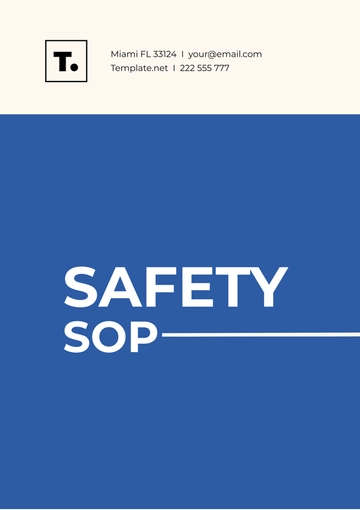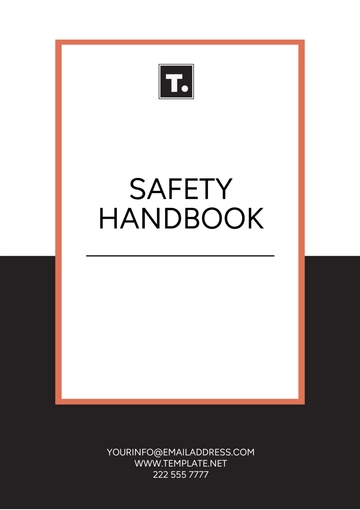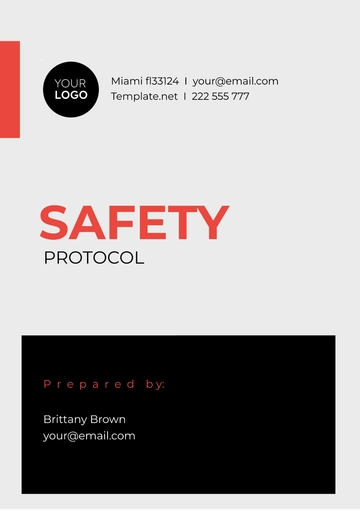Free School Safety Guide

I. Emergency Response Plan
In emergencies, swift and effective action is crucial. Our plan ensures safety during fire, natural disasters, medical incidents, and lockdowns. For fires, activate the alarm, evacuate, and assemble at the School Yard. During natural disasters, seek shelter, follow instructions, and wait for clearance. For medical emergencies, contact the nurse immediately. In lockdowns, follow procedures, secure doors and windows, and remain hidden until the all-clear.
Emergency Type | Procedures | Additional Information |
|---|---|---|
Fire Emergencies | Activate the nearest fire alarm pull station. | Ensure all occupants are aware of the location of fire alarm pull stations. Do not use elevators during a fire evacuation. |
Evacuate the building following designated routes. | Designated evacuation routes are posted in each room and hallway. Assist those needing help, but do not jeopardize your safety. Ensure that stairwells and exits are kept clear at all times. | |
Assemble at the primary assembly point: School Yard. | Roll call will be taken to account for all individuals. Follow instructions from emergency response personnel. Do not leave the assembly point until instructed to do so. Ensure that students and staff are accounted for and identify any missing individuals. | |
Natural Disasters | Seek immediate shelter under sturdy furniture. | Identify safe areas in advance, such as under desks or tables. Stay away from windows and heavy objects that could fall. Be aware of your surroundings and any potential hazards. |
Follow the instructions given by school authorities. | Remain calm and await further instructions. Be prepared to evacuate if directed. Follow the advice of emergency responders and school officials. | |
Wait for the all-clear signal before evacuating. | Do not leave the shelter area until the all-clear signal is given. Be aware of aftershocks or secondary hazards. Follow instructions from emergency personnel. | |
Medical Emergencies | Contact the school nurse immediately at [Your Company Number]. | Ensure someone stays with the injured person until help arrives. Provide as much detail as possible about the situation. Remain calm and reassure the injured person. |
Provide details of the incident and location. | Include any relevant information such as allergies or pre-existing conditions. Describe the location within the school (e.g., classroom number). Ensure that emergency services can easily locate the scene. | |
Follow first aid procedures while waiting for help. | Do not administer first aid beyond your level of training. Keep the area clear for medical personnel. Be prepared to provide information to emergency responders. | |
Lockdown Situations | Follow the lockdown announcement procedures. | Lockdown procedures are designed to secure individuals in place. Stay calm and follow instructions from school authorities. Be prepared to take immediate action to protect yourself and others. |
Close and lock all doors and windows. | Use any available means to barricade the door if possible. Cover windows if they do not have blinds or curtains. Stay away from windows and doors. | |
Stay quiet and out of sight until the all-clear is given. | Silence cell phones and other electronic devices. Do not open the door for anyone unless instructed by emergency personnel. Remain hidden and quiet until directed otherwise. |
Regular training and drills are essential to ensure that all staff and students are familiar with the Emergency Response Plan. Review and update the plan regularly to address any changes in the school environment or emergency procedures.
II. Safety Equipment and Facilities
Ensuring the availability and functionality of safety equipment and facilities is vital for the well-being of our school community. Fire extinguishers are strategically placed and undergo monthly maintenance checks. First aid kits are stocked and located in accessible areas. Emergency exits are clearly marked and unobstructed, with evacuation maps posted in classrooms for easy reference.
Safety Equipment | Location/Details | Maintenance/Checks |
|---|---|---|
Fire Extinguishers | Located at each exit point and in hallways. | Fire extinguishers are strategically placed near exit points and in hallways to ensure quick access in case of fire emergencies. They are mounted at a height accessible to adults and are clearly marked. It is essential to ensure that they are not obstructed by objects and remain visible at all times. |
Monthly maintenance checks by facility staff. | Facility staff conduct monthly maintenance checks to ensure that the fire extinguishers are in working condition. This includes checking the pressure gauge, inspecting the seal and pin, and ensuring that the extinguisher is not damaged or tampered with. Any issues or concerns identified during the checks are promptly addressed and recorded in the maintenance log. | |
First Aid Kits | Available in classrooms and the school office. | First aid kits are located in easily accessible and visible areas, such as classrooms and the school office. They are stocked with essential medical supplies and equipment to provide basic first aid treatment for common injuries and emergencies. It is important to ensure that the kits are clearly labeled and easily identifiable. |
Regularly stocked and checked for expiration dates. | First aid kits are regularly checked to ensure that they are fully stocked and that all items are within their expiration dates. This includes checking supplies such as bandages, gauze, antiseptic wipes, and medications. Any expired or used items are replaced promptly to maintain the kit's readiness. | |
Emergency Exits | Clearly marked and unobstructed at all times. | Emergency exits are clearly marked with illuminated exit signs and directional arrows to guide individuals to safety during an emergency. It is important to ensure that the exits are not blocked or obstructed by objects, furniture, or debris. Regular inspections are conducted to ensure that the exits are clear and that the signage is visible and legible. |
Evacuation maps posted in each classroom. | Evacuation maps are posted in each classroom to provide clear guidance on evacuation routes and assembly points. The maps indicate the location of emergency exits, fire extinguishers, first aid kits, and other emergency equipment. It is important to review the evacuation maps regularly with students and staff to familiarize them with the evacuation procedures. |
III. Safety Training and Drills
Our commitment to safety includes regular training sessions and drills for staff and students. Quarterly safety training sessions, starting from January 2050, will cover essential safety procedures. Monthly fire and lockdown drills ensure everyone is prepared for emergencies. These measures are vital for maintaining a safe learning environment.
A. Training Schedule
Safety training sessions for staff and students will occur quarterly, starting from January 2050.
Training Schedule | Description | Frequency |
|---|---|---|
Safety Training | Comprehensive safety training sessions for both staff and students covering essential safety procedures. | Quarterly starting January 2050 |
Training sessions will cover a range of topics, including fire safety, first aid, emergency response, and security protocols. | ||
Training sessions will be interactive, engaging, and tailored to the specific needs of staff and students. | ||
Sessions will include both theoretical knowledge and practical exercises to ensure understanding and readiness. |
B. Emergency Drills
Fire and lockdown drills are scheduled monthly to ensure preparedness.
Emergency Drills | Description | Frequency |
|---|---|---|
Fire Drills | Monthly fire drills to practice evacuation procedures and ensure everyone is familiar with emergency exits. | Monthly |
Drills will simulate various fire scenarios to prepare staff and students for different situations. | ||
Participants will be instructed on the proper use of fire extinguishers and other fire safety equipment. | ||
After each drill, a debriefing session will be conducted to discuss any issues or improvements. | ||
Lockdown Drills | Monthly lockdown drills to practice securing the school and ensuring everyone knows how to respond in a lockdown. | Monthly |
Drills will include procedures for securing doors and windows, staying out of sight, and remaining quiet. | ||
Participants will be trained on how to communicate with authorities and provide necessary information. | ||
Following each drill, an evaluation will be conducted to assess the effectiveness of the lockdown procedures. |
IV. Security Measures
Ensuring a secure environment is paramount. Access control requires all visitors to sign in at the main office and wear badges. Surveillance includes CCTV cameras at entrances and hallways, monitored round-the-clock by security. Reporting suspicious activities is crucial; all such behavior should be reported to the school office immediately, and local authorities contacted if necessary. These measures are essential for maintaining a safe and secure school environment.
Security Measures | Details |
|---|---|
Access Control | All visitors, including parents, guests, and vendors, must sign in at the main office upon arrival. |
Visitor badges must be worn visibly at all times while on school premises. | |
Staff should be vigilant in ensuring that all individuals wear proper identification. | |
Surveillance Systems | CCTV cameras are strategically placed at all entrances and hallways to monitor activities. |
Cameras are connected to a central monitoring system that is monitored 24/7 by trained security personnel. | |
Surveillance footage is recorded and stored for a specified period for review if needed. | |
Reporting Suspicious Activities | Any suspicious behavior, such as unauthorized individuals on campus or unusual activity, should be reported immediately to the school office. |
In case of serious concerns or emergencies, local authorities should be contacted promptly for assistance. |
V. Health and Wellness
Promoting health and wellness is integral to our school's ethos. Hygiene practices are encouraged with regular handwashing stations and hand sanitizers in common areas. Nutrition guidelines are followed closely, providing balanced meals in accordance with health standards. Mental health support is prioritized, with access to school counselors for emotional support and additional resources available on [Your Company Website].
Health and Wellness Measures | Details |
|---|---|
Hygiene Practices | Handwashing stations are located in key areas such as restrooms and cafeterias, promoting regular hand hygiene among students and staff. |
Hand sanitizers are strategically placed in common areas such as hallways and entrances to encourage their use and help prevent the spread of germs. | |
Nutrition Guidelines | The school cafeteria provides balanced meals that meet nutritional standards set by health guidelines. Meals include a variety of fruits, vegetables, proteins, and whole grains. |
Menus are designed to offer healthy options and accommodate dietary restrictions or special needs of students. | |
Mental Health Support | School counselors are trained professionals who provide confidential emotional support and guidance to students dealing with personal or academic challenges. |
Additional mental health resources, such as articles, videos, and contact information for external support services, are available on [Your Company Website] to help students and families access further assistance. |
VI. Contacts and Resources
This part provides essential information for immediate assistance during emergencies. This section includes crucial contact details for the school office and local police, online safety resources, and social media updates. It ensures everyone has access to vital support, enhancing overall safety and preparedness.
Emergency Contacts
Contact Type | Details |
|---|---|
School Office | Phone Number: [Your Company Number]. The school office is the first point of contact for all school-related emergencies and inquiries. |
Local Police Department | Phone Number: [Police Department Number]. In case of serious security concerns or criminal activities, contact the local police department immediately. |
Support Services
Service Type | Details |
|---|---|
Online Safety Resources | Additional safety resources and guidelines can be accessed on [Your Company Website]. These resources provide comprehensive information on safety protocols, emergency procedures, and health guidelines. |
Social Media Updates | Follow [Your Company Social Media] for regular updates, announcements, and safety tips. Social media platforms are used to communicate urgent information and provide real-time updates during emergencies. |
- 100% Customizable, free editor
- Access 1 Million+ Templates, photo’s & graphics
- Download or share as a template
- Click and replace photos, graphics, text, backgrounds
- Resize, crop, AI write & more
- Access advanced editor
Ensure a safe learning environment with Template.net’s School Safety Guide Template. This fully customizable and editable document is designed to meet your school's unique needs. Quickly craft comprehensive safety plans with ease, as it's easily editable in our Ai Editor Tool. Protect your students and staff efficiently with a user-friendly template that saves you time.





























